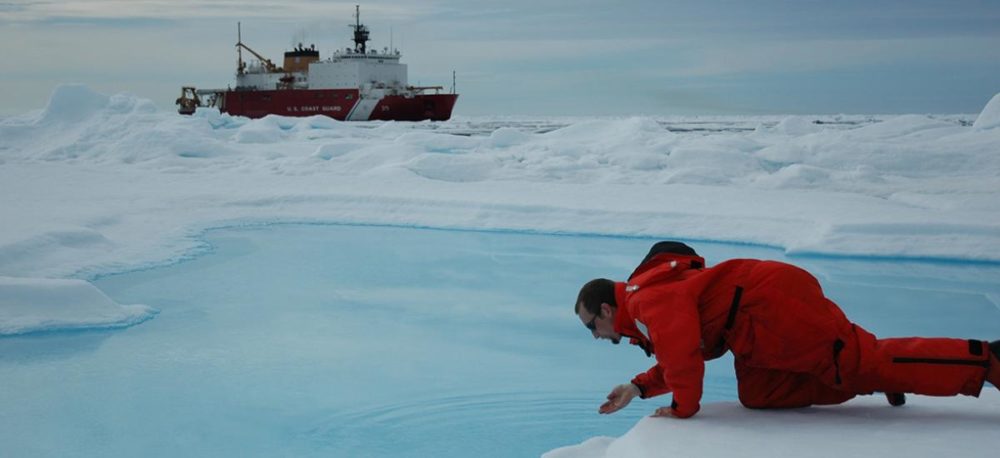Among intergovernmental bodies, it is hard to find a more congenial, consensus-driven body than the Arctic Council. This organization, comprised of the foreign ministers of the eight arctic states and leaders of six Arctic indigenous organizations, has managed to find common ground on issues of sustainability and the environment even during politically tense standoffs among the members, such as when Russia invaded Crimea.
Leave it to the Trump administration to detonate this paragon of congeniality. In 2017 they thoroughly pissed off the diplomats from the other seven countries, and embarrassed their own team, by demanding last minute deletions of climate change language from the Ministerial Document – the Arctic Council’s biannual affirmation of ongoing work and priorities. This nearly derailed the entire diplomatic effort, but the other countries, bent on preserving the integrity of the Arctic Council’s famously united front, conceded, and all eight foreign ministers signed the document.
This week, however, they drew the line when Secretary of State Mike Pompeo, a former Congressman from the Kansas district that houses the Koch brothers climate-denying headquarters, demanded that no language on climate change or the Paris Climate Agreement be included in the Ministerial Document. That was it; for the first time ever in the history of the Arctic Council, no Ministerial Document was signed at the biannual meeting of the Ministers.
Adding insult to injury
Setting aside the possible effects upon the integrity of the Arctic Council, this level of climate denial was a profound embarrassment to American diplomats and an insult to Arctic residents who are facing ongoing and serious threats due to climate change in the region that is warming two to three times faster than the rest of the planet.
To add insult to injury, Secretary Pompeo spoke glowingly of Arctic warming, insisting that the loss of sea ice would yield “new opportunities for trade” and otherwise be a boon for Arctic nations.
Let’s have a look at these “opportunities.”
Rapid sea-ice loss is an indicator of warming, and recent studies have shown that Arctic sea ice is at an all-time low. In addition to creating unsafe and deadly conditions for travelers and hunters who rely on thick sea ice in the winter, this also means that coastal villages are exposed to violent winter storms and waves. As the permafrost thaws beneath these coastal villages, the loss of protective sea ice accelerates rapid erosion as villages begin planning for expensive relocations.
What this rate of sea-ice loss implies for the melting rate of Arctic glaciers is also ominous. Research has shown that, regardless of emissions reductions in the coming years, Arctic warming will accelerate until at least mid-century, potentially bringing tipping points for irreversible melting of the Greenland ice sheet. This would have dire implications for coastal cities around the world. As the president of the Marshall Islands once said to the premier of Greenland – “If your island melts, mine sinks.” Every coastal city in the world, from Miami to Hong Kong, will pay a huge price if these tipping points are crossed.
As the ice melts at an accelerating rate, permafrost thaw is also accelerating, and will continue to do so until at least mid-century. Scientists tell us that we are likely to lose nearly half of the Arctic’s permafrost in the coming decades, threatening 70% of Arctic infrastructure. Roads, pipelines, airports, buildings, homes, and, in the case of Russia, entire industrial cities will require billions of dollars to preserve or rebuild. To make matters worse, thawing permafrost has the potential to amplify global warming by releasing substantial amounts of carbon dioxide, methane, and nitrous oxide from the formerly frozen soil. Together with the loss of sea ice, which increases the heat storage capacity of the Arctic and accelerates warming, these phenomena add an ominous signature to the uncertainty surrounding global warming.
What happens in the Arctic affects us all
In the lower 48 states we experience the influence of a warming Arctic year-round. In winter, as shocking heat waves affect the Arctic region, it reduces the temperature differential between the Arctic and the mid-latitudes. This slows the jet stream into a wavy meander that can usher polar air and crippling freezes into the mid-latitudes in a phenomenon that’s sometimes called a polar vortex (though technically it’s a disruption of the polar vortex). Such frigid incursions have become unusually frequent—and expensive—in the mid-latitudes. In 2018, the costs were borne by families in New England, but in any given year these events can affect nearly any mid-latitude region.
In other words, warming in the Arctic is amplifying the climate crisis worldwide, at great economic cost. Seven out of the eight Arctic nations are deeply concerned and committed to addressing the problem. The Trump administration and Secretary Pompeo, however, beholden to the fossil fuel industry and embarrassingly ignorant of the economic realities of the climate crisis, do not care. They delude themselves with fever-dreams of economic opportunity that have no basis in reality.
While it is tempting to write this off as just another absurd international Trump administration stunt to please their fossil fuel patrons, Americans cannot ignore the health, safety, and economic threats that this blithe ignorance will cause for people abroad and here at home. While the bar for American leadership has dropped shockingly low, it’s time to demand that our public servants remember who they are meant to serve.

